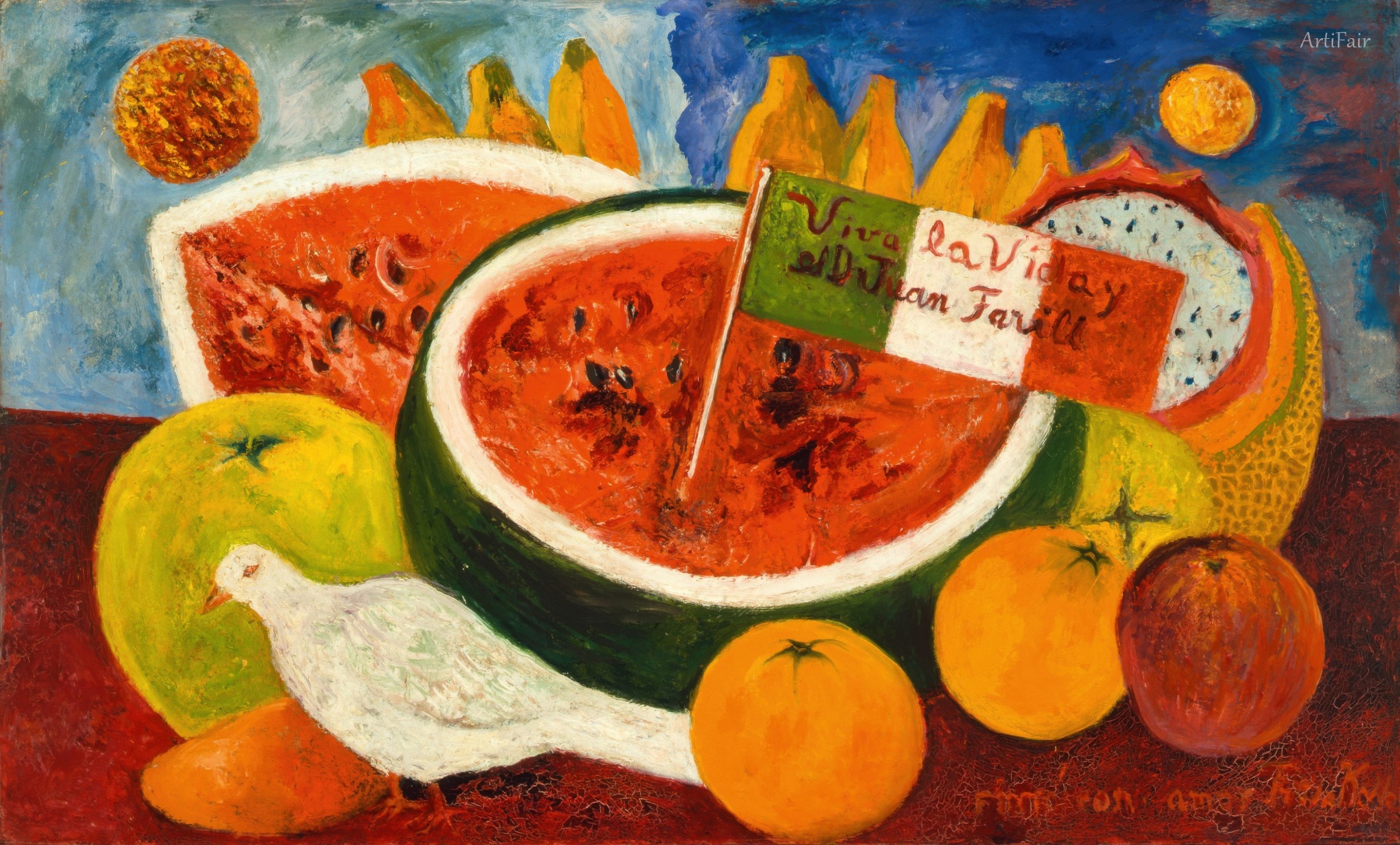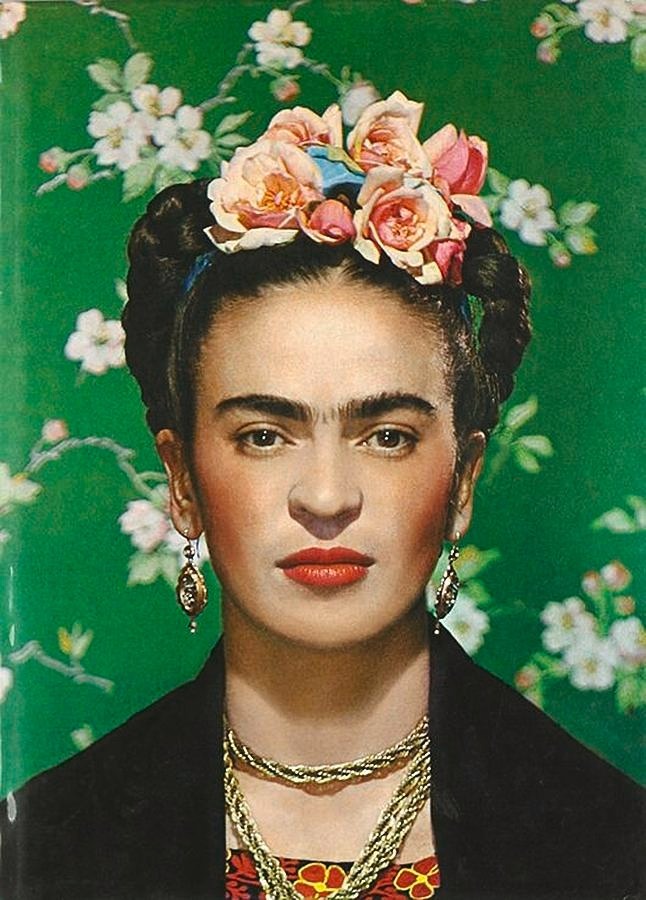

Frida Kahlo
MX
83
Artworks
1907 - 1954
Lifespan
Artist Biography
Magdalena Carmen Frida Kahlo y Calderón, born on July 6, 1907, in Coyoacán, Mexico City, was a painter whose life and art are inextricably linked. Her father, Wilhelm Kahlo, was a German photographer of Hungarian Jewish descent, and her mother, Matilde Calderón y González, was of Spanish and Indigenous Mexican (Purépecha) heritage. Frida's early life was marked by adversity; at age six, she contracted polio, which left her right leg thinner than her left, a condition she often concealed with long skirts. Despite this, she was a spirited and ambitious student, initially aspiring to a medical career. However, a catastrophic bus accident on September 17, 1925, irrevocably altered her path. A steel handrail impaled her through the hip, fracturing her spine, pelvis, collarbone, ribs, and right leg, and dislocating her shoulder. The accident led to lifelong chronic pain and over 30 surgeries. It was during her agonizingly slow recovery, confined to her bed, that Kahlo began to paint, her mother providing a specially made easel and her father lending his oil paints. A mirror placed above her allowed her to become her own primary subject, famously stating, "I paint myself because I am often alone and I am the subject I know best."
Kahlo's artistic development was profoundly influenced by her personal experiences, Mexican culture, and her tumultuous relationship with the renowned muralist Diego Rivera. She reconnected with Rivera in 1928, seeking his opinion on her work. He recognized her talent and encouraged her, leading to their marriage in 1929. Their relationship was passionate and volatile, marked by numerous affairs on both sides (including Rivera's with Frida's sister, Cristina), divorce in 1939, and remarriage a year later. Throughout these upheavals, Kahlo's art remained intensely personal. She drew inspiration from Mexican folk art (Mexicayotl), pre-Columbian artifacts, and Catholic iconography, creating a unique style characterized by vibrant colors, fantastical elements, and stark realism. Her paintings often explored themes of identity, postcolonialism, gender, class, and the human body, unflinchingly depicting her physical and emotional suffering. Works like "Henry Ford Hospital" (1932), portraying her traumatic miscarriage, and "My Birth" (1932) are testaments to her raw honesty.
International recognition for Kahlo's work began to grow in the late 1930s. André Breton, a leading figure of Surrealism, visited Mexico in 1938 and was deeply impressed by her art, declaring her a self-taught Surrealist. Although Kahlo often distanced herself from the label, asserting, "I never painted dreams. I painted my own reality," Breton helped arrange her first solo exhibition at the Julien Levy Gallery in New York in 1938, which was a critical success. This was followed by an exhibition in Paris in 1939. While the Paris show was less financially successful, the Louvre purchased her painting "The Frame" (c. 1938), making her the first 20th-century Mexican artist to be featured in their collection. During this period, she painted some of her most iconic works, including "The Two Fridas" (1939), an emblematic dual self-portrait reflecting her emotional turmoil following her divorce from Rivera, and "Self-Portrait with Thorn Necklace and Hummingbird" (1940).
Throughout the 1940s, Kahlo's reputation solidified in Mexico and the United States. She became a founding member of the Seminario de Cultura Mexicana and taught at the Escuela Nacional de Pintura, Escultura y Grabado "La Esmeralda," where her students became known as "Los Fridos." However, her health continued to deteriorate. She underwent numerous spinal surgeries, often wearing steel and leather corsets to support her damaged body, a suffering vividly expressed in paintings like "The Broken Column" (1944). Despite her physical agony, she remained politically active, a committed communist, and continued to produce art, though increasingly focusing on still lifes infused with political symbolism in her later years. Her resilience was evident in her first solo exhibition in Mexico in 1953; too ill to leave her bed, she attended the opening by having her four-poster bed transported to the gallery by ambulance.
Frida Kahlo died on July 13, 1954, at the age of 47 in La Casa Azul, her childhood home in Coyoacán. While the official cause was pulmonary embolism, speculation about suicide persists. Her work remained relatively obscure for several decades after her death, but was rediscovered in the late 1970s by art historians and political activists, particularly within the feminist movement. By the early 1990s, "Fridamania" had taken hold, and she became a global icon. Kahlo's unsparing exploration of the female experience, her celebration of Mexican identity and indigenous traditions, and her courageous confrontation with pain and adversity have resonated deeply across cultures and generations. La Casa Azul, now the Frida Kahlo Museum, remains a pilgrimage site, and her art continues to inspire with its raw emotional power, vibrant imagery, and enduring message of resilience.